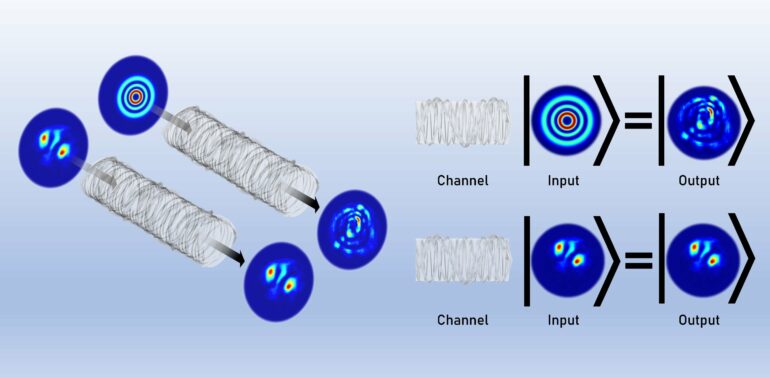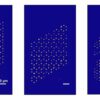An exciting prospect in modern optics is to exploit patterns of light—how the light looks in its many degrees of freedom—often referred to as “structured light.” Each distinct pattern could form an encoding alphabet for optical communication, or might be used in manufacturing to enhance performance and productivity. Unfortunately, patterns of light get distorted when they pass through noisy channels, for instance, stressed optical fiber, aberrated optics, turbid living tissue, and perhaps a very severe example, atmospheric turbulence in air.
In all these examples, the distorted pattern can deteriorate to the point that the output pattern looks nothing like the input, negating the benefit. As reported in Advanced Photonics, researchers in South Africa have shown how it is possible to find distortion-free forms of light that come out of a noisy channel exactly the same as they were put in. Using atmospheric turbulence as an example, they showed that these special forms of light, called eigenmodes, can be found for even very complex channels, emerging undistorted, while other forms of structured light would be unrecognizable.
Passing light through the atmosphere is crucial in many applications, such as free-space optics, sensing, and energy delivery, but finding how best to do this has proved challenging. Traditionally a trial-and-error approach has been used to find the most robust forms of light in some particular noisy channel, but to date all forms of familiar structured light have shown to be distorted as the medium becomes progressively noisier. The reason is that light can “see” the distortion.
But is it possible to create light that doesn’t see the distortion, passing through as if it wasn’t there? To make this advance, the researchers treated the noisy channel as a mathematical operator and asked a simple question: what forms of light would be invariant to this operator? In other words, light waves that are in the natural modes of the channel behave as if they don’t see the distortion: the true eigenmodes of the channel.
The example tackled was the severe case of distortions due to atmospheric turbulence. The answer to the problem revealed previously unrecognized forms of light (i.e., those not in any well-known structured light family, but nevertheless completely robust to the medium). This fact was confirmed experimentally and theoretically for weak and strong turbulence conditions.
According to corresponding author Andrew Forbes, SPIE Fellow and Distinguished Professor at University of the Witwatersrand in Johannesburg, “What is exciting about the work is that it opens up a new approach to studying complex light in complex systems—for instance, in transporting classical and quantum light through optical fiber, underwater channels, living tissue, and other highly aberrated systems.”
He adds, “Because of the nature of eigenmodes, it doesn’t matter how long this medium is, nor how strong the perturbation, so that it should work well even in regimes where traditional corrective procedures, such as adaptive optics, fail.”
Maintaining the integrity of structured light in complex media will pave the way to future work in imaging and communicating through noisy channels, which is particularly relevant when the structured forms of light are fragile quantum states.
More information:
Asher Klug et al, Robust structured light in atmospheric turbulence, Advanced Photonics (2023). DOI: 10.1117/1.AP.5.1.016006
Citation:
Distortion-free structured light (2023, February 7)



